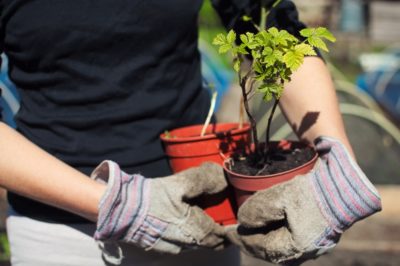Benefits of Container Growing
The pros may exceed the cons when growing raspberries in containers, even if it is impossible to eventually transplant your container raspberry plants into the ground. Here are some benefits:
- The growing cost may be less expensive than purchasing market raspberries.
- Fruit is tastier and fresher than market fruit.
- It is easier to adjust the soil’s composition.
- Plants can be moved around to the best environmental conditions.
- Plants won’t spread outside container boundaries.
Drawbacks of Container Growing
The biggest drawback of growing raspberries in containers is the reduced crop size. Raspberry canes in the ground multiply quickly, producing more and larger raspberries. Canes grown in containers are hindered from spreading and multiplying.
Another drawback of container growing is quicker drying of the soil. A raspberry grower must check the moisture level almost daily. Frequent watering is a must, especially on hot summer days.
Choose the Appropriate Container
The best container for growing raspberries has a diameter and a depth of at least 24 inches (60 cm) and has drainage holes. Use frost tolerant containers if the plants will remain outdoors in very cold weather.
Choose the Right Cultivar
There are dozens of raspberry cultivars, but not all are suited for container growing. Cultivars that grow very tall and spread wide are not appropriate. Here are some of the best raspberry cultivars for container growing:
- Malling Jewel
- Malling Promise
- Autumn Bliss
- September
- Zeva
Use the Proper Soil
A soil containing the proper nutrients and good drainage capabilities is crucial for container raspberry plants. A quality potting soil with added compost and natural fertilizer should be sufficient for a healthy plant start.
Planting in Containers
Line 1-2 inches of small pebbles in the bottom of the containers. Fill the containers with a quality potting soil, compost, and organic fertilizer. In each container, dig a hole twice the size of the root ball or bare-root cane. Set one plant or bare-root cane into the hole and fill soil around it.
It is important to completely bury the raspberry’s roots and crown into the soil and firmly press the soil around the plant or bare-root cane. Place one or more bamboo stakes into the soil. Growing canes will be tied to this simple .
After planting, the soil should be watered so that the soil is wet 6 inches or deeper. Lock in the moisture by applying a 2-3 inch layer of mulch. One to two inches of water per week is needed throughout the growing season.
